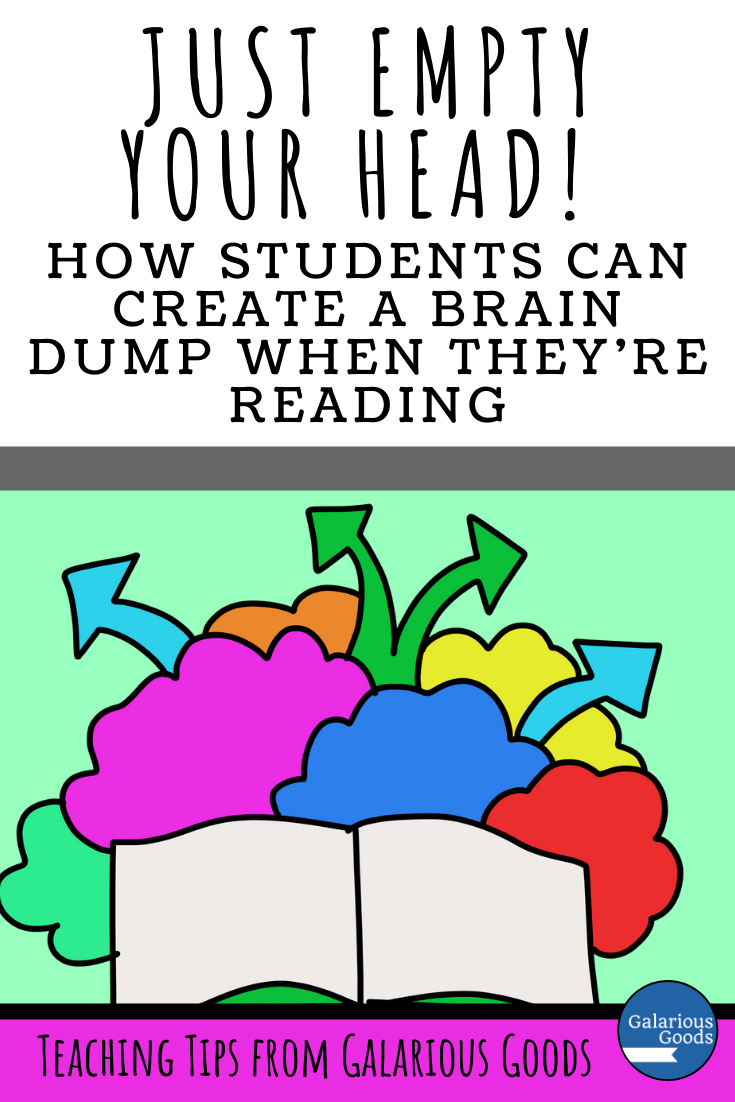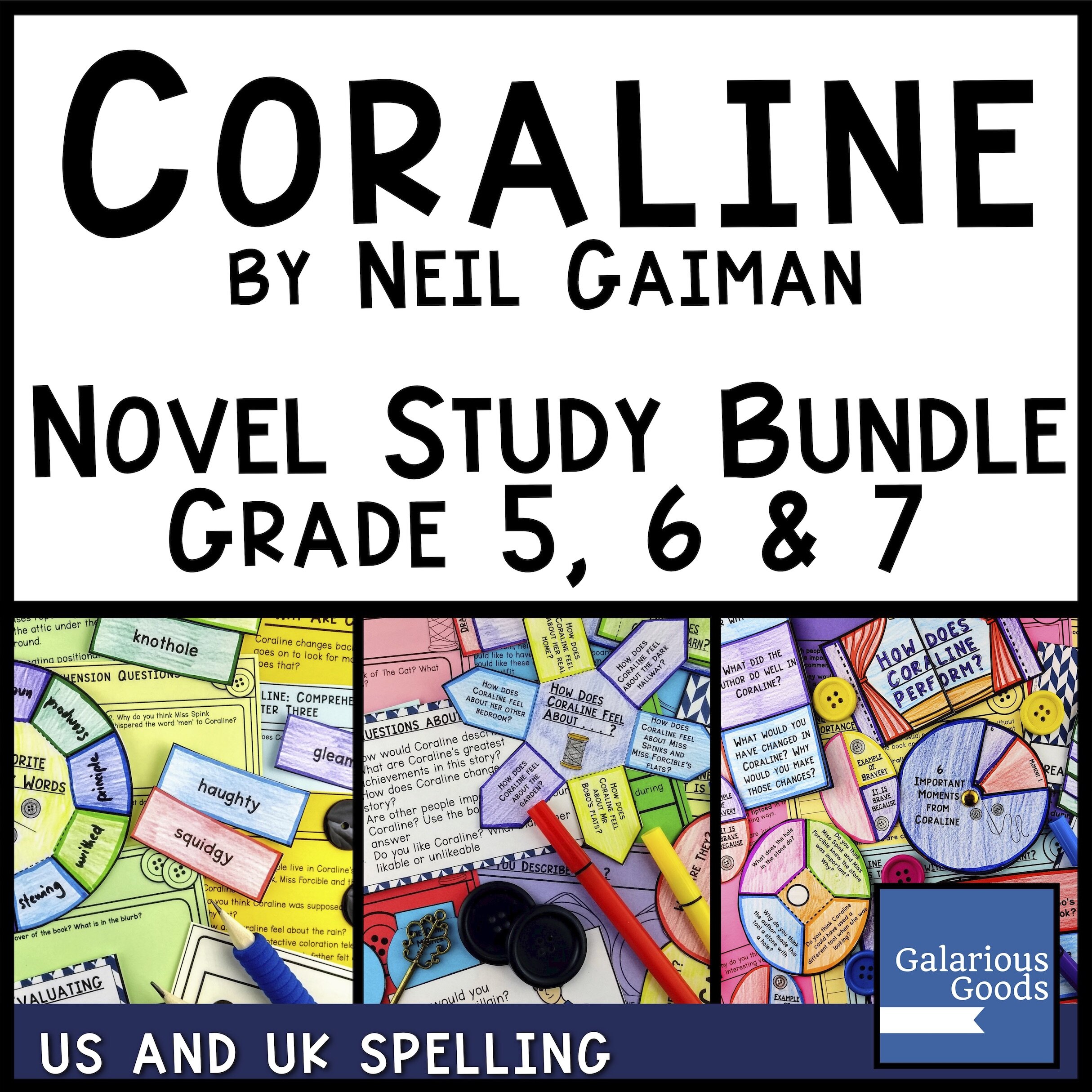Just Empty Your Head! How Students Can Create a Brain Dump When They’re Reading
/“Just hold all these complex ideas in your head. Then add in some new vocabulary. And form some questions. And don’t forget to make predictions!”
What are we asking students to do when we ask them to read a complex text or a novel? When you start to break it all down, it’s easy to see that students are being asked to recall or process several things at the same time. And that is, of course, an incredibly important skill to have. But how can we scaffold this to ensure that every student in the class has success with the more complex task? Enter . . . the brain dump!
What is a Brain Dump?
Essentially, a brain dump is the act of taking everything that you’re thinking . . . and putting it down onto paper (or a technological alternative). Many people use them when they’re feeling stressed or anxious or overwhelmed; it allows people to grab all of the nagging little thoughts in their heads and put them into a tangible form. They’re also great if you’re in the habit of ‘remembering’ all of the things you need to get done in a day or a week. By putting them down onto paper you have something to help you remember, loosening the mental load just a little.
“So, that sounds great . . . but how does it work when you’re teaching reading to children?”
Using a Brain Dump when exploring a book
As I pointed out, reading a text involves a lot of different actions, particularly if the text is longer or is complex. There’s characters to remember, settings to put into place, plots to follow. There’s the basic act of decoding, then there’s understanding the vocabulary - either by using context clues, remembering words or by using word roots. Students then need to make predictions of what might happen next or why they think a particular character acted the way they did or why the author might have chosen to use that particular word. The act of reading is a complex one!
By creating a brain dump, students can get everything they’re thinking about the text out of their head and onto the page. They’re able to see what they do and don’t know and use their brain dump to create new connections.
“That’s great . . . but how do we teach it?”
How Do We Teach Brain Dumps for Reading
It might be best to start with a short piece of text - a poem or a picture book - which is familiar to the students. On the first read through, students should simply listen to the text. On the second read through, you demonstrate the brain dump. As you read through it again, model writing down everything which comes into your head - from observations on the characters’ names (“Oh, that dog is called Trevor. I went to school with a Trevor. Just like the Trevor from Fireman Sam . . .“) to questions (“I wonder why Pig never seems to learn his lesson. Or does he learn his lesson and just constantly make new mistakes?”) to random thoughts which are unconnected to the text but came into your brain anyway (“I wonder if it’ll be wet at lunch?”)
Once you’ve modelled your brain dump you can use the same text or another familiar text for the students to have a try. Remind them that it doesn’t need to be perfect - it’s not being used for assessment - it’s just a way of helping them better understand the texts they are reading. Give students plenty of opportunities to practice - remembering that they can be used with texts students use in history or civics, science or technology as well.
“Ok, I get that. But what do we do with them once we have them?”
Using the Brain Dumps
Once students have their brain dumps, they can use them in a range of ways. Again, this is something you might like to model to the students - but they might also develop their own ways of using them, which they might like to share with their classmates.
Students might like to use their brain dumps for basic recall references. They allow students to write down the important characters or the important dates and events, something to refer back to when they need them. Or they could use them to brainstorm questions they might like to ask about the text, going back through their information to see where there are any queries.
If students create brain dumps for two different texts, they might like to use them to find connections - once they see the information written in front of them, it can be easier to see where those themes or ideas overlap. Students might also like to share their brain dump with a classmate to see how different people have responded to the same text.


















